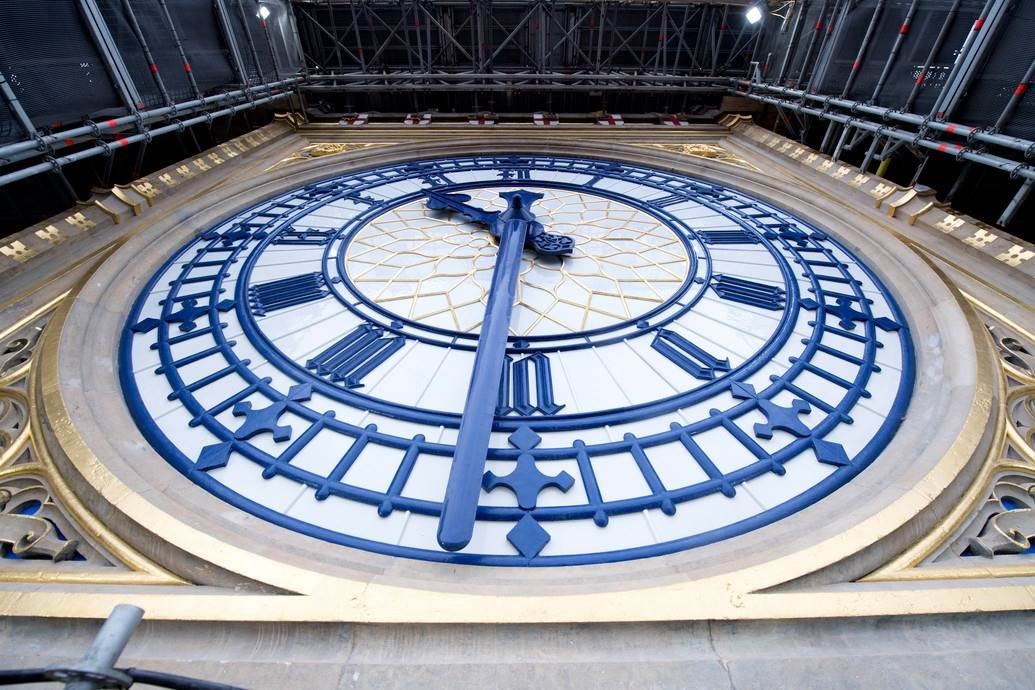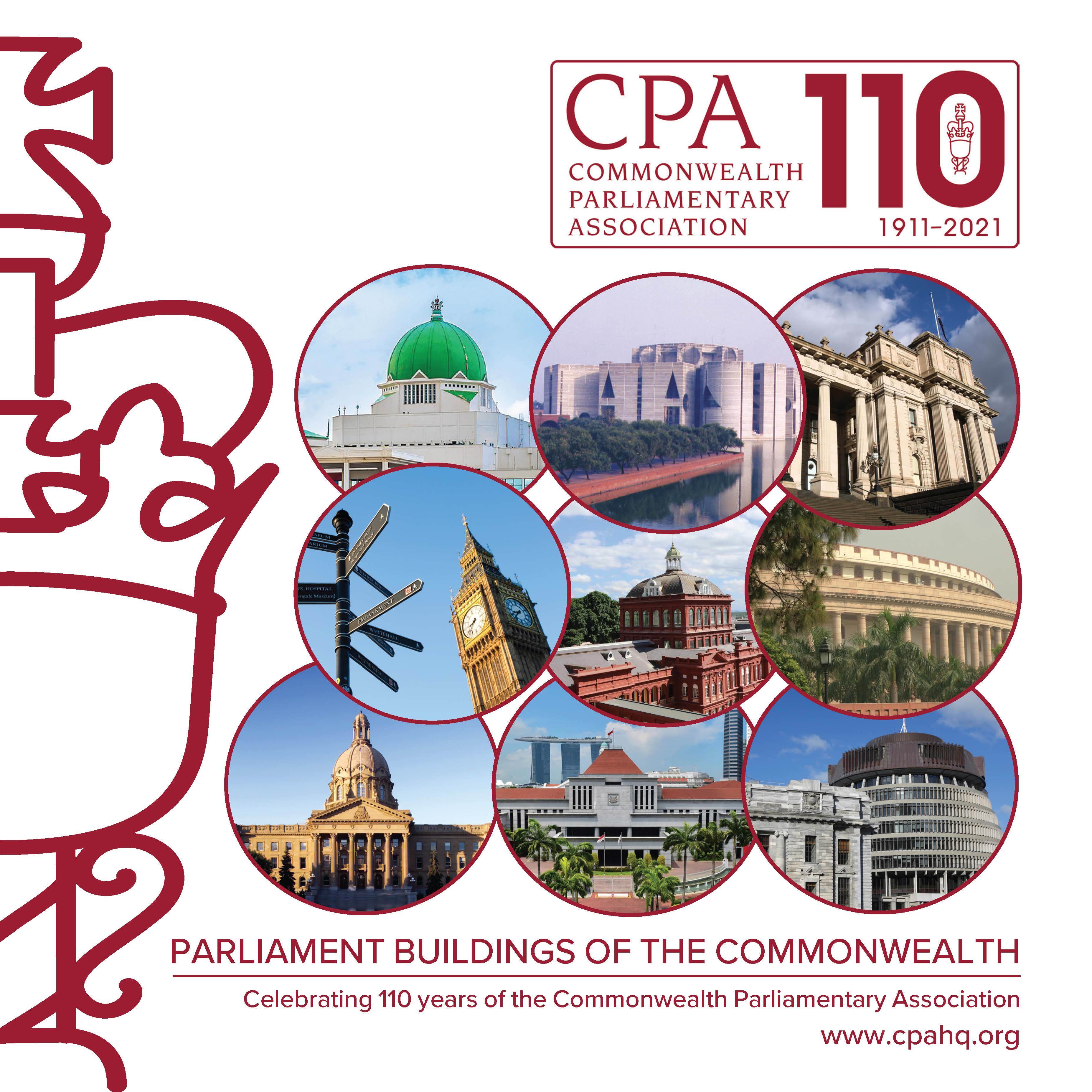
The restoration of Big Ben and examining Commonwealth Parliaments’ clock towers
As the chimes of Big Ben ring out once again at the UK Parliament after falling silent during the restoration of the Elizabeth Tower for almost five years, this blog article examines this iconic clock tower and some of the many different clock towers in Parliaments around the Commonwealth.

The newly restored Elizabeth Tower more popularly known as Big Ben (photo CPA HQ).
UK Parliament
Big Ben is probably one of the world's most famous and instantly recognisable clocks, and it has featured in images around the world. The restoration of the Elizabeth Tower has generated enormous interest across the world and Big Ben has fallen silent for almost five years – one of the longest periods that it has been out of operation since the Elizabeth Tower was built.
The clock tower that we know today first began to be constructed in 1843 following the creation of a new Gothic Revival-style Palace of Westminster designed by architect Charles Barry in 1840, in the wake of an earlier fire that destroyed most of the old building. The construction of the clock tower took several years as a competition was held to finalise its design, with John Dent appointed in 1852 to build the clock to the designs of Edmund Beckett Denison. The clock mechanism was completed in 1854.
In 1856, the first 'Big Ben' bell was cast, although it later developed a crack during testing and a second 'Big Ben' bell was cast by the Whitechapel Bell Foundry in East London. The 'Great Clock' began ticking on 31 May 1859 and the 'Great Bell's strikes were heard for the first time across London on 11 July.
The sound of Big Ben’s chimes was broadcast for the first time across the United Kingdom on New Year's Eve 1923 by BBC Radio. Big Ben fell silent during the Second World War (1939-1945), to comply with blackout regulations, and a mechanical failure in 1976 resulted in another period of silence for nine months. The repairs were completed in time for the bells to ring out to mark the occasion of Queen Elizabeth II's Silver Jubilee visit to Westminster Hall in May 1977.
Further restoration and essential maintenance work in 2007 meant that Big Ben and the quarter bells were silenced once again. In 2012, the famous Clock Tower was renamed the Elizabeth Tower to honour Queen Elizabeth II's Diamond Jubilee.
The latest restoration project has once again silenced Big Ben for almost five years as urgent conservation has been required to preserve this global icon. The huge task of conserving the 96-metre-tall clock tower has been a complicated and delicate process. With a footprint of just 12 metres square and located in the middle of a busy working Parliament, this project has been very challenging.
The restoration has installed new fire safety systems, as well as better workspaces for the clock team and the installation of a lift to make access safer and faster. The Architecture and Heritage team in the UK Parliament have also worked to restore and clean over 160 years of paint applied to the clock tower and to reveal the original blue clock dials. Find out more about the restoration work at the UK Parliament.
Today, the restoration of the horological masterpiece of Big Ben and its famous clock tower to its former glory have now been revealed for everyone to enjoy.

The Peace Tower at the Parliament of Canada (image Shutterstock)
Parliament of Canada
The Federal Parliament of Canada is located on Parliament Hill and the main style of the Parliament buildings is Gothic Revival. The Parliament's 'Centre Block' building burned down in a catastrophic fire in 1916 and was rebuilt over the next nine years in a more Victorian Gothic style than before.
Construction of a clock tower began in 1921 to replace the previous Victoria Tower that was destroyed in the 1916 fire. A new, freestanding 98-metre clock tower at the Parliament of Canada was dedicated as the Peace Tower in 1927, in commemoration of the Canadians who had lost their lives during the First World War. Upon completion, the Peace Tower stood as the tallest building in the whole of Canada.
Designed by Jean Omer Marchand and John A. Pearson, the Peace Tower is a campanile (or free-standing tower) that features many stone carvings, including approximately 370 gargoyles, grotesques and friezes, in keeping with the Victorian High Gothic style of the rest of the parliamentary complex.
The tower's 4.8-metre diameter clock faces are located near to the apex, one on each of the four facades. The mechanical workings of the timepiece were manufactured by the Verdin Company and are set by the National Research Council’s atomic clock. The original Peace Tower clock was given to Canada by the United Kingdom.
Accompanying the Peace Tower clock is a 53-bell carillon (a set of bells played using a keyboard or by an automatic mechanism), conceived by an Act of Parliament as a commemoration of the 1918 armistice that ended the First World War. The bourdon ('largest') bell weighs 10,090 kg and the smallest weighs 4.5 kg. All 53 bells were cast and tuned by Gillett & Johnston, a bell foundry based in Croydon, England.
The tower's flagpole holds symbolic significance in Canada, acting as the flagpole of the nation and strict protocol surrounds the display of flags and banners from the Peace Tower. Within the Peace Tower is a Memorial Chamber dedicated to the memory of each of Canada's major conflicts during the First World War and later conflicts.
Restoration work on the clock tower has taken place several times, beginning with a two-year closure in in 1994 and the again in 2006, when the clock was stopped for the first time in 28 years. In February 2022, the carillon bells chimed for the final time before a restoration project began to protect their heritage status.
Today, visitors to the Parliament of Canada can see inside the historic clock tower and see spectacular views from the Peace Tower’s observation deck.

The large clock tower at the Parliament of Botswana was constructed in 1965 (image Parliament of Botswana).
Parliament of Botswana
Located in Botswana’s capital of Gaborone, the National Assembly building was constructed in 1965 and completed before independence in 1966. The Parliament building’s design takes cues from Tswana culture, and it sits within an enclave of Government Ministries and administrative buildings. The complex features a distinctive covered walkway, a slender colonnade supporting semi-circular shells, which wraps itself around the National Assembly buildings, and a large clock tower.

The 125-metre clock tower at the Parliament of Kenya (Image Shutterstock).
Parliament of Kenya
The Parliament of Kenya is the bicameral Legislature of the country and is located in Nairobi, the national capital. The current Parliament building was constructed in 1954, with further extensions to the building in 1964. The older part of the building features a large clock tower, similar to the Houses of Parliament at Westminster. The building’s foundation stone, which had been recovered from the ruins of the UK Parliament after a 1941 air raid, was presented to the Kenyan Parliament as a symbol of the two countries’ close relations.

The clock tower at the Parliament of Bermuda was added in 1887 (image Parliament of Bermuda).
Parliament of Bermuda
The Parliament of Bermuda is over 400 years old, making it one of the oldest Parliaments in the Commonwealth. The first elected Assembly of Bermuda was held on 1 August 1620.
In 1815, when the capital of the island was moved from St George’s to the city of Hamilton, the Parliament followed, and it moved to its current location at The Sessions House in 1826. The Sessions House is considered to be the third oldest Parliament building in the world.
The red terracotta Italian-style building was constructed in 1819 in the city of Hamilton. The building features a clock tower which was added in 1887 to commemorate the Golden Jubilee of Queen Victoria. Both the House of Assembly and the Supreme Court can be found within the building.

The Clock Tower at the Parliament of Fiji was assembled by the Cumbria Clock Company who are today working on the restoration of Big Ben at the UK Parliament (Image Shutterstock).
Parliament of Fiji
The Parliament of the Republic of Fiji is the unicameral legislative body of Fiji which dates from 10 October 1970, when the country became independent. The Parliament replaced the former legislative body, the Legislative Council, which had existed in various forms since 1874.
The Fiji Parliament is located within a complex of Government Buildings in the capital, Suva. The Government Buildings were designed in the late 1930s by the Chief Colonial Architect, Walter Frederick Hedges, with the architectural concept of an Art Deco style. The building was formally opened in 1939 and since then there have been various renovations, including repair and restoration of the impressive Clock Tower. The clock was built and assembled by the Cumbria Clock Company in 1939.

The historic clock tower at the Parliament of Barbados is a prominent feature of the Parliament buildings in Bridgetown (image Shutterstock).
Parliament of Barbados
The national Legislature of Barbados is the bicameral Parliament of Barbados, consisting of an appointed Senate and an elected House of Assembly. The Parliament is one of the oldest Legislatures in the Commonwealth having been established on 26 June 1639.
The Parliament buildings (also known as The Public Buildings) are located in Bridgetown, the capital city of Barbados. A historic clock tower of coral limestone is a prominent feature of the Parliament buildings, located on the West Wing and featuring the Barbadian flag which flies from a mast at its peak. The Parliament buildings were constructed between 1870 and 1874 in a Neo-Gothic architectural style.

The 52-metre high clock tower at the National Assembly of Québec was installed in 1888 (image National Assembly of Québec).
National Assembly of Québec
The National Assembly of Québec is the unicameral Legislative body of the Province of Québec in Canada. The Parliament building - designed by Eugène-Étienne Taché - was constructed between 1877 and 1886 and is a monument to the history of Québec and French America. It features the Second Empire architectural style that was popular for prestigious buildings both in Europe (especially in France where the style originated) and the United States during the latter part of the 19th century.
In 1888, a clock at the top of the 52-metre tower was installed. The building’s symmetrical layout with a tall clock tower in the middle is typical of legislative institutions of British heritage, however the architectural style is believed to be exceptional among Parliament buildings found in other Canadian provincial capitals. This unique structure was recognised as a Québec national historic monument in 1985.

'Little Ben' in The Seychelles is a replica of the original clock tower in London (image Shutterstock).
Parliament of The Seychelles
Although the unicameral National Assembly of The Seychelles doesn’t have a clock tower itself, there is an interesting clock tower with parliamentary connections located nearby.
In the centre of Victoria, the capital of The Seychelles, is a silver-painted clock tower erected in 1903, known locally as ‘Little Ben’ or ‘Lorloz’. The clock tower is said to be a replica of ‘Big Ben’ at the Houses of Parliament in London, United Kingdom.

This clock tower in Western Australia commemorates the first woman Member of any Australian Parliament (image Wikipedia).
Parliament of Western Australia
Although it is not a Parliamentary clock tower, the Edith Cowan Memorial is a clock tower at the entrance to King’s Park in Perth, Western Australia that was built in 1934 as a memorial to Edith Cowan, the first female Member of any Australian Parliament. It was unveiled on 9 June 1934 and is the first civic monument erected in Australia to honour an Australian woman.
Edith Cowan was a campaigner for women's rights, the welfare and protection of disadvantaged women and children. In 1920, after Western Australia passed legislation allowing women to stand for parliament, Cowan won a seat in the Western Australian Legislative Assembly, thereby becoming the first woman to hold a seat in any Australian Parliament.
This article also featured in The Parliamentarian 2023 Issue One - access this issue online or via our e-reader platform.
Jeffrey Hyland is the Editor of The Parliamentarian, the CPA’s Journal of Commonwealth Parliaments.
For further information about the publication or to suggest a feature article please email editor@cpahq.org.




